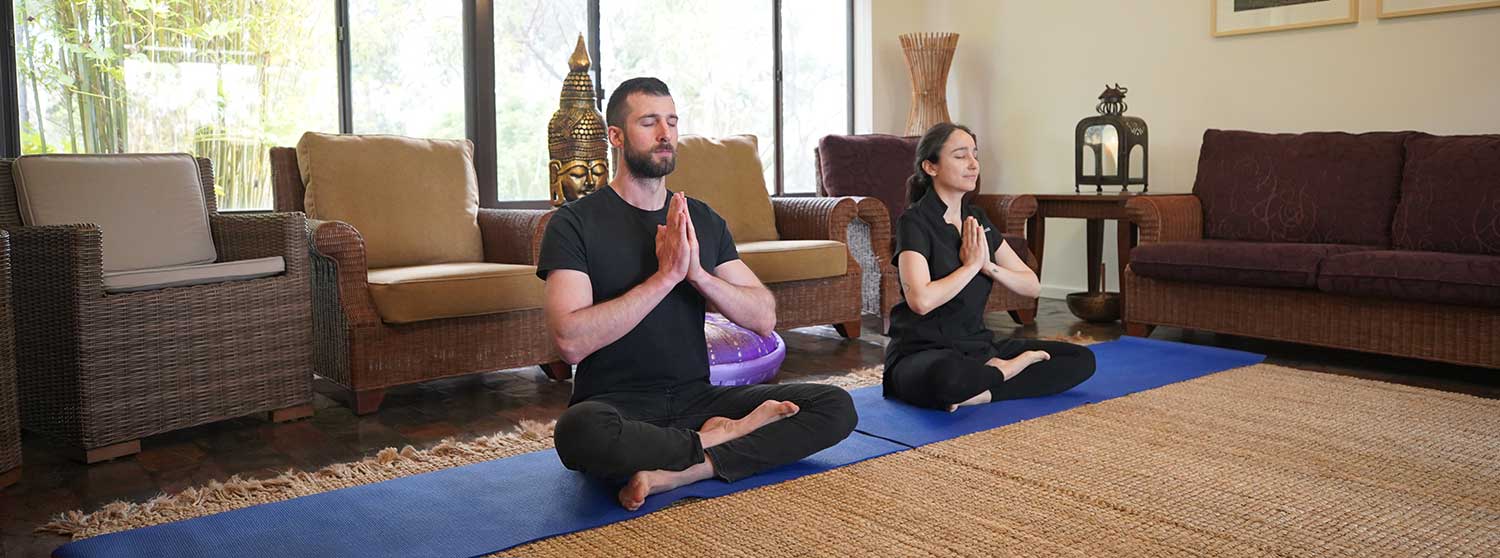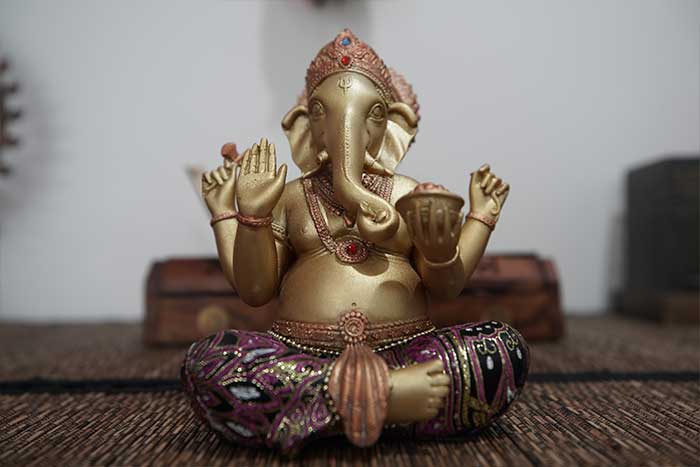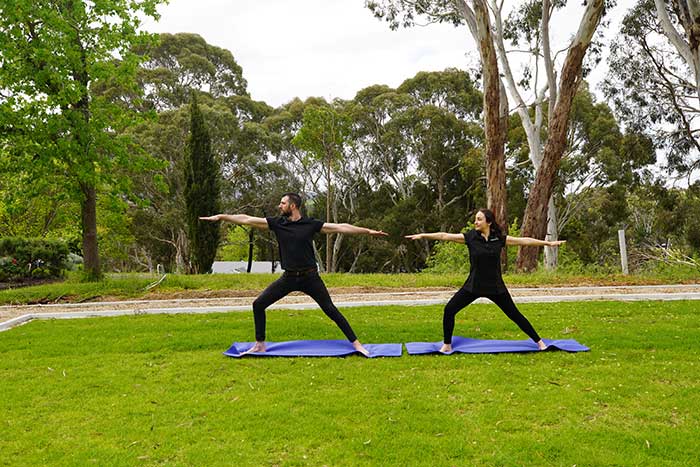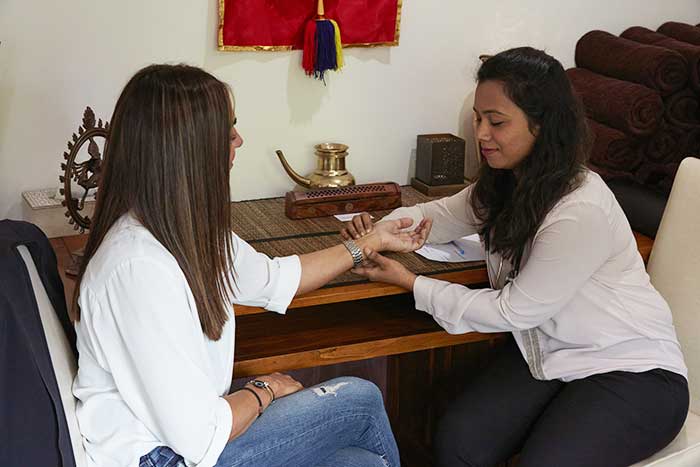About Ayurveda
Ayurveda for healing
Ayurveda recognises that we are not all the same. We are each unique and therefore need something different. This is emphasised by identifying and abiding to an Ayurvedic ‘Life-Style’ that is compatible, restorative and corrective for each person.

Ayurveda – a medical science
Established as the oldest surviving complete medical system in the world, Ayurveda has its origins dating back more than 5ooo years ago. The name AYURVEDA is derived from its ancient Sanskrit roots – ‘AYUR‘ (‘life’ or ‘longevity’) and ‘VEDA‘ (‘science’ or ‘knowledge’). Ayurveda can be described as ‘The Science of Life or Longevity’ or ‘The Yoga of Life’. Ayurveda and Siddha, provide the knowledge and the tools to allow you to experience your ‘life-span’ to its fullest extent for very specific purposes. This medical science offers a rich, comprehensive outlook to a healthy life. It was expounded and practiced by the spiritual rishis, who laid the foundations of the Vedic civilization in India, by organising the fundamentals of life into proper systems.
Ayurveda aims to integrate and balance the body, mind and spirit.
This is believed to help prevent illness and promote wellness. Ayurveda philosophy believes that people, their health, and the universe are all related. It is believed that health problems can result when these relationships are out of balance.
The Goal and Purpose of Ayurveda
There are two objectives of Ayurveda:
- To maintain the health of those who are well and are not suffering from any disease condition. This is achieved by regulating one’s diet and nutrition, exercise, hygiene and lifestyle.
- The second objective targets curing the diseases of those who are sick. This section has a detailed insight into the various disease conditions, their causes, diagnostic techniques, remedies and therapies to cure, prognosis etc.
However, the highest or ultimate goal of Ayurveda and Siddha treatment is to attain absolute detachment of the ‘Atman’ or soul. This is the state of liberation or ‘Moksham’. At the same instance, the body, mind and its equipment are not neglected but brought very much into focus and attention, as it is the means of realising the Self or Truth.
Principles of Ayurveda
Ayurveda is based upon the principle of the unity of life and seeks to increase our state of health through developing those factors of similar nature to it and reducing those factors of contrary or variant nature. Ayurveda believes that life is conceived as the union of body, senses, mind and spirit. A living being is a combination of three humors – “DOSHAS” (Vata, Pitta and Kapha).
Each person will practice and live differently as each person is different and unique.

The Five Elements
How and why are we different and unique?
Ayurveda tells us that all that is matter contains five great elements, namely Ether (Space), Wind (Air), Fire, Water and Earth. These elements are in all matter and therefore present in Man. As such the physical Man is an integral and inseparable part of Nature.
The Five Great Elements are:
- Ether (Space/Akasha),
- Wind (Air/Vayu),
- Fire (Agni),
- Water (Jal), and
- Earth (Prithvi).
The elements in their subtle form moving from the most subtle (Space/Ether), to the most gross (Earth) element.
The Origin of the Five Great Elements
In the beginning was the Word and the Word was God (Om). When we say word it means sound and sound means waves and these sound waves are vibrations. When there are vibrations in Space, in Akasha, it is immediately followed by movement. Space pulsating to and fro gives rise to movement. This movement of space is Wind. As the pulsating to and fro of Space increases in speed, the speed of Wind also increases.
As the pulsating and vibrations increase friction is experienced. As this further increases it gives rise to heat and the element Fire. When there is heat in Space there will be tendencies for condensation. As condensation increases water droplets form thus condensation produces the Water element. As the Water increases in volume it gains in mass and weight and gathers cosmic dust and due to certain forces of nature such as gravity, this mixture of Water and cosmic dust gathers together and as it swirls around a mass is produced and this produces the Earth element.

The Attributes of the Five Great Elements
Ether
Ether is space; and for consciousness to exist, space is required. This is the place where everything happens and all exists. It is characterised by the quality of sound. Its attributes are cold, dry, light, subtle, liquid, mobile, sharp, soft, smooth, and clear.
Wind
Wind is movement and has the quality of touch and sound. Its attributes are cold, dry, light, subtle, mobile, sharp, rough, hard, and clear.
Fire
Fire is energy and has the qualities of sight, touch, and sound. Its attributes are hot, dry. Light, subtle, mobile, sharp, rough, hard, and clear.
Water
Water provides flexibility and has the qualities of taste, sight, touch, and sound. Its attributes are cold, wet, heavy, gross, liquid, static, dull, soft, smooth, and cloudy.
Earth
Earth gives firmness and has the qualities of smell, taste, sight, touch, and sound. Its attributes are cold, dry, heavy, gross, solid, static, dull, hard, rough, cloudy, and dark.
Although some of the qualities are shared by more than one element they exist to different degrees in different elements. For example fire, air, and ether all contain the attributes of being dry, light, subtle, but these are the least subtle in fire and most subtle in ether.
According to this science, there are three primary life forces or energies formed by the combination of these five elements.
These three energies are known as Doshas and classified as follows;
Vata Dosha
Ether/Air Elements
Pitta Dosha
Fire/Water Elements
Kapha Dosha
Water/Earth Elements
Each of us possess a basic nature or constitution, (Prakriti) in whose state of balance or equilibrium is health. Disease arises from a differentiation or degeneration from that basic state of health, (Vikriti). Ayurveda aims at restoring our basic nature (Prakriti) and allowing us to live in harmony with it. To do this, we must first understand what it is. For that determination of constitution, physical and mental, is necessary, which is the foundation of Ayurveda.
Ayurveda Consultation
The following information is a typical overview of the consultation procedures at Ayurveda Village.
What to do before a consultation:
- It is desirable that consultations are conducted first thing in the morning. The heat, noise, and crowd all affect the quality of the pulse readings and thus this time ideal where possible.
- You should not have eaten for at least 4 hours before having a pulse diagnosis. However, a drink is allowed.
- Please tell us ahead of the consultation if you are taking any medication as we may require this to be temporarily suspended for a few hours prior to the diagnosis. This does not include life-support medicines.
What happens during a consultation?
- The principles and philosophy of Ayurveda will be explained in general to you, so you will understand the diagnosis/prognosis.
- Thereafter Pulse reading and Diagnosis/personal interview are carried out. Once the pulse reading has been taken a brief explanation as to the meaning and condition of the pulses will be given.
- A comprehensive Food list containing information on Food dietetics (items of food that you may eat) that is correct for your Vikriti (current imbalanced state) will be provided and other pertinent instructions will also be given. You will also be provided with a relevant constitution analysis to study.
What happens after a consultation?
- After the session you will receive an individualised treatment recommendation by email. These will clearly state the course of action needed. It is then your decision as to whether you go further
- Special Herbal support formulas are prepared for the individual.
How long is the consultation?
The consultation will be 60 minutes in length.



